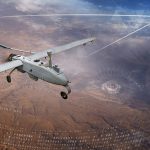With the recent introduction of NavStorm-M, BAE Systems has updated nearly all of its GPS receivers with M-Code capability, giving warfighters access to equipment that is more resistant to spoofing and jamming—something that’s becoming increasingly critical on today’s battlefield.
“When customers are ready for a tech refresh or new build, we have M-Code,” said Justin R. Wymore Sr., customer requirement manager, weapons PNT, navigation and sensor systems, noting there’s been a gap between deployment and M-Code receiver availability. “The user equipment is available. Now, it’s just a matter of integrating and fielding it.”
BAE unveiled the compact NavStorm-M during ION’s Joint Navigation Conference (JNC) held in Kentucky earlier this month. The gun-hardened integrated anti-jamming and GPS receiver can be leveraged for artillery, missiles and unmanned systems.
The company describes NavStorm-M as a next-generation assured positioning, navigation and timing (A-PNT) device. It offers a layered protection approach to beamforming, anti-spoofing, resiliency, and software assurance.
BAE offers various M-Code capable receivers, including the SABR-M for precision strike and other small applications. And these receivers have been proven to protect against spoofing and jamming in various testing scenarios.
The recently introduced NavStorm-M is designed to meet the weight, power and cost (SWaP-C) requirements that drones, loitering munitions, hypersonic platforms and other weapons require. It can provide accurate GPS navigation on its own or integrated with an inertial navigation system (INS).
BAE still offers receivers with Selective Availability Anti-Spoofing Module (SAASM) capability to meet today’s need, Wymore said, but the company continues to innovate and look ahead to what warfighters will require for success in the future. Customers will always use GPS when they can, but they also need a reliable backup when they can’t. BAE is a solutions maker, developing devices that will enable whatever sensors or solution requirements warfighters need and provide critical PNT information even when GPS is lost.
“We are moving into the A-PNT space more broadly and branching out from GPS. That’s starting with offering the M-Code capability in various form factors,” Wymore said. “From the performance technology perspective, we understand this space better than most. We’re going to continue to advance the technology behind PNT, not just GPS.”






